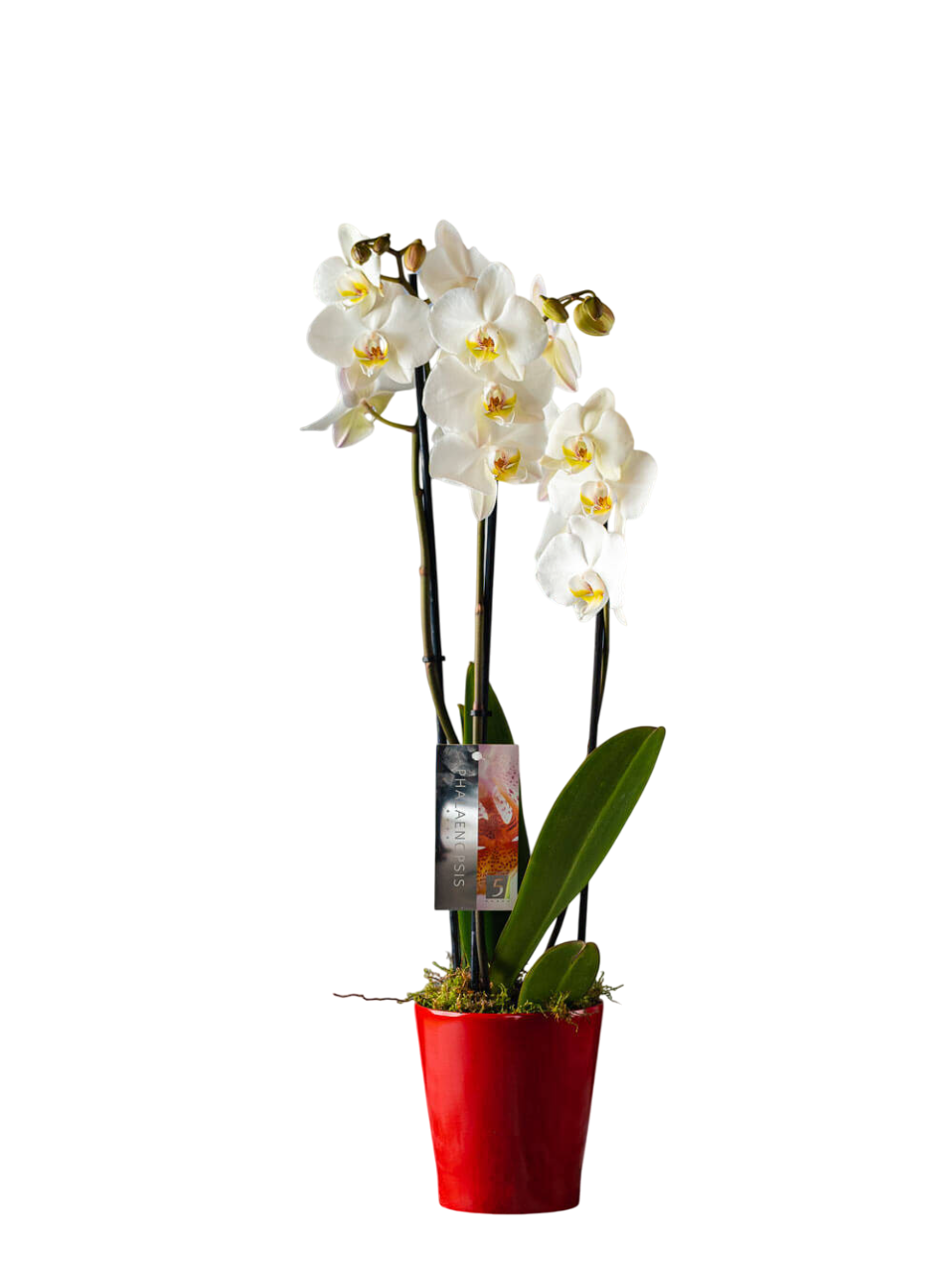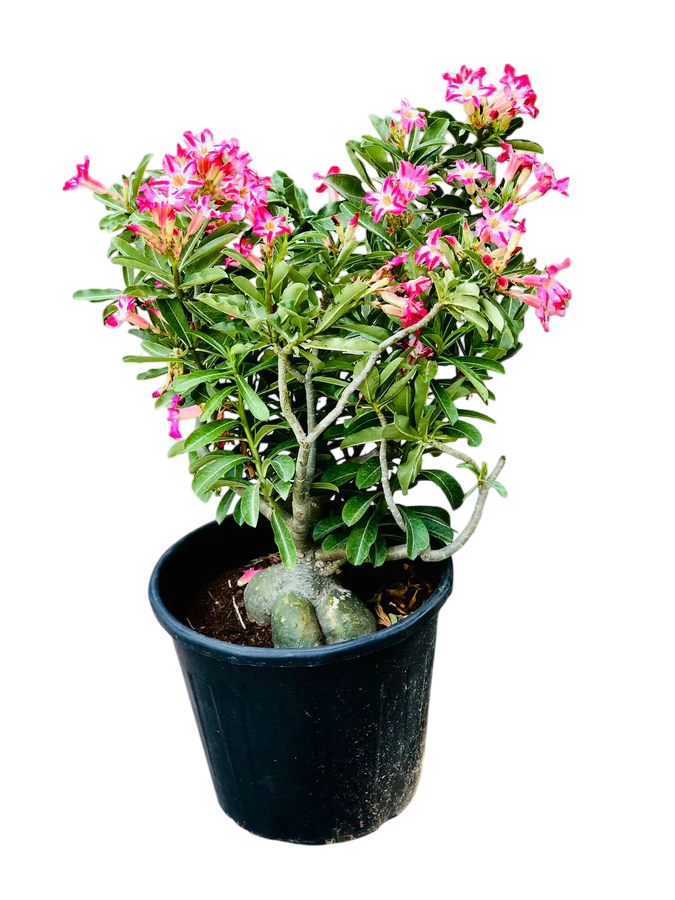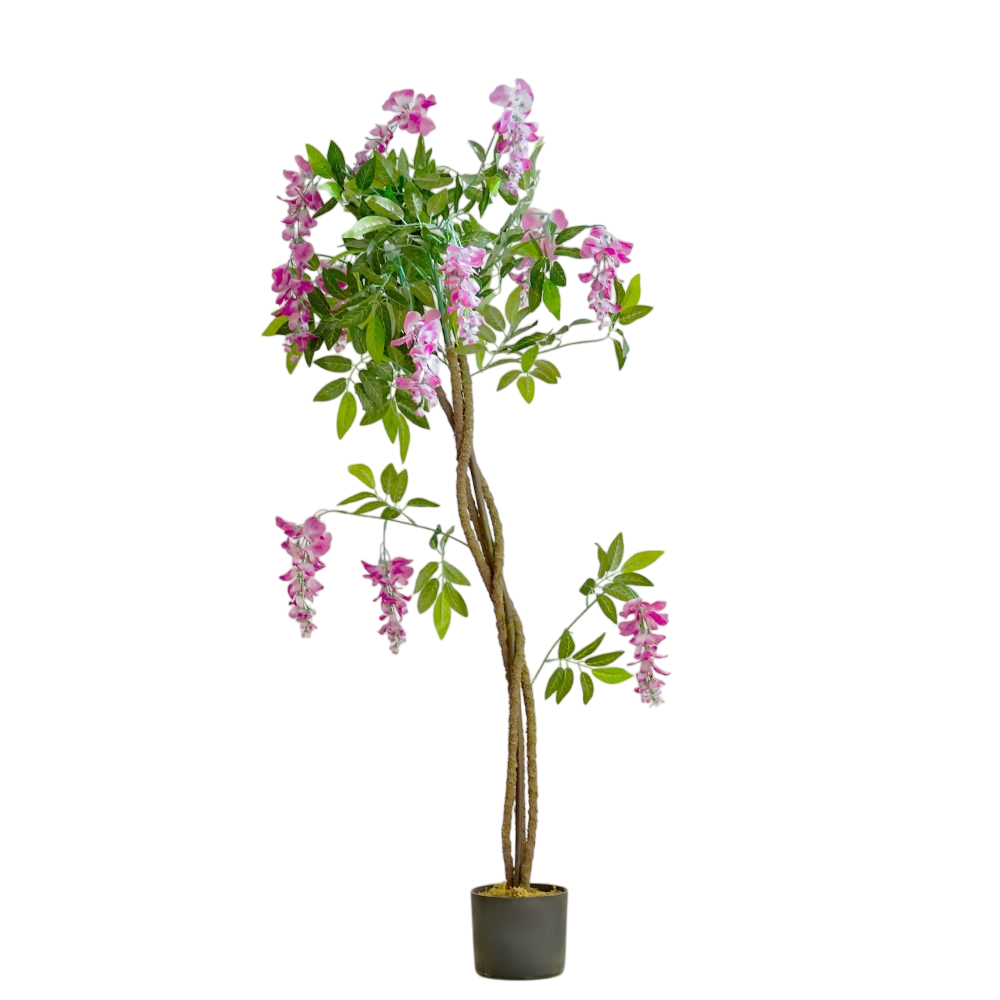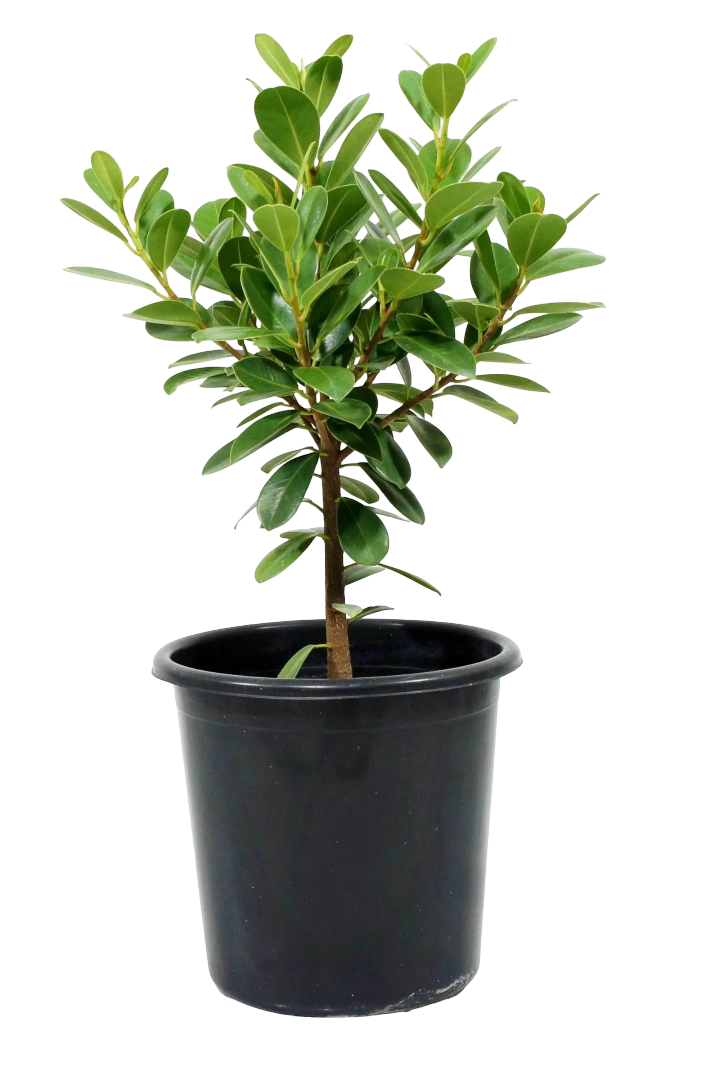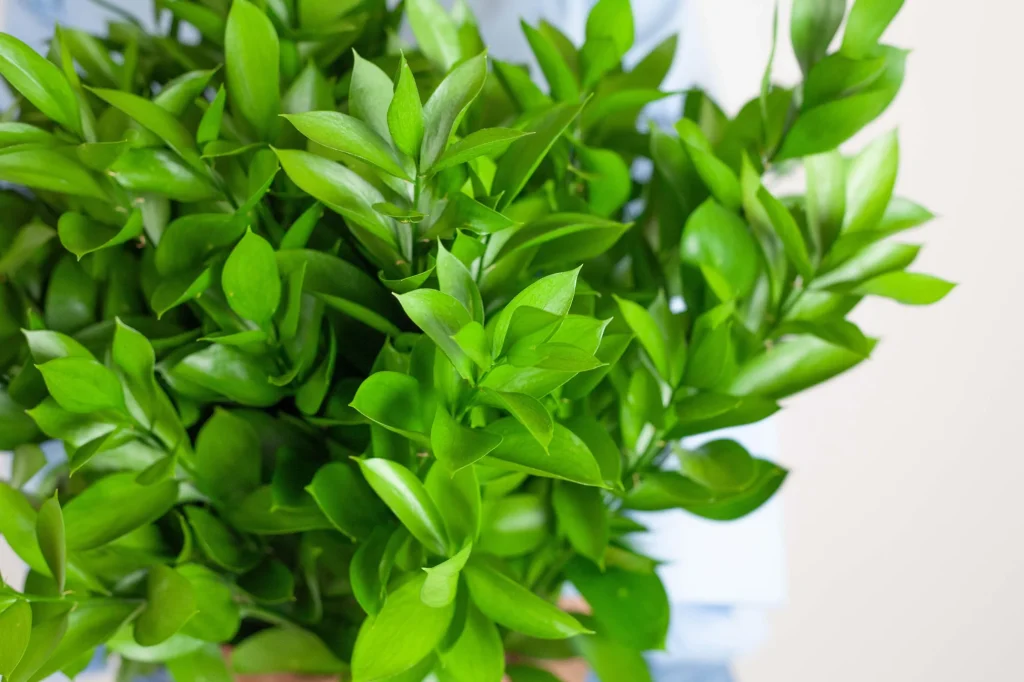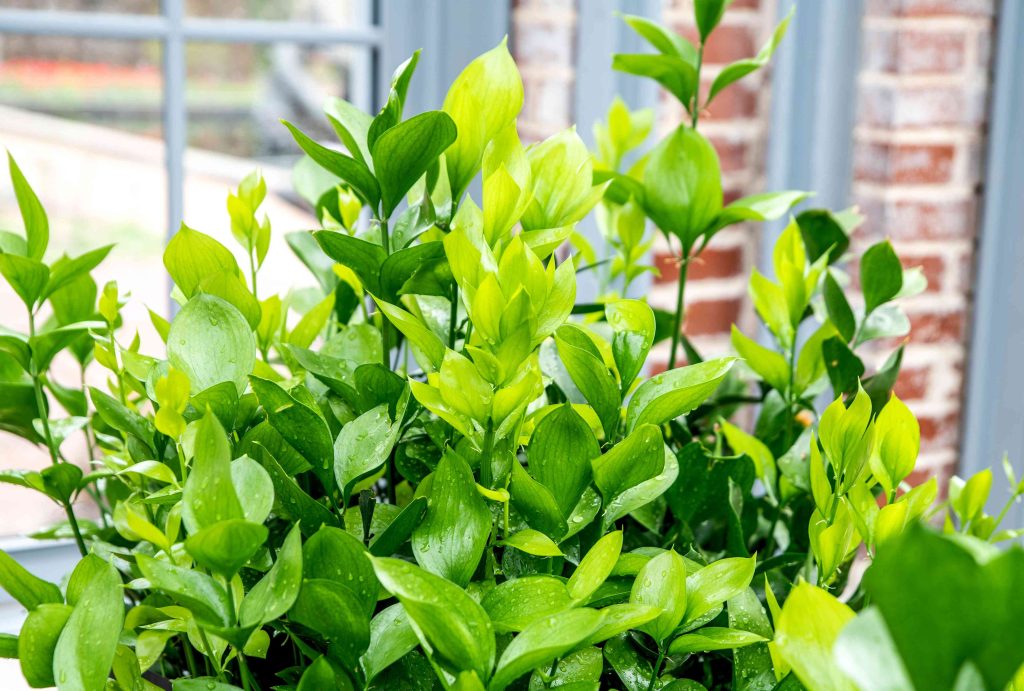
Why Grow This Plant?
- Provides bright red berries for stunning winter interest.
- Grows well in shady spots where many plants struggle.
- Low-maintenance and highly drought-tolerant.
- Acts as a natural barrier with its prickly foliage.
- Evergreen leaves keep gardens lively all year round.
Cultural & Historical Significance
Ruscus has deep cultural roots. In ancient Europe, it was used as a protective charm and medicinal herb. Traditional healers valued it for circulation and venous health, while its tough stems were used by butchers to clean cutting boards, earning it the name “Butcher’s broom.” In the Mediterranean, it symbolizes resilience and protection. Today, Ruscus foliage is widely used in the floral trade for elegant arrangements and festive decorations, especially during Christmas for its bright berries.
Ideal Growing Conditions in Kenya
- Light: Prefers partial to full shade; ideal for shaded gardens.
- Soil: Well-drained, slightly acidic loam, though it tolerates clay or sandy soils.
- Water: Minimal; water deeply during prolonged dry spells.
- Temperature: Thrives in cool to moderately warm climates such as Nairobi and Central Kenya.
- Regions: Performs best in shaded landscapes or cooler highland regions.
How to Plant It
- Choose a shady, sheltered location with well-drained soil.
- Dig a hole twice as wide as the nursery pot.
- Place the plant so its crown sits level with the soil surface.
- Backfill with soil, firm gently, and water thoroughly.
- Mulch lightly to retain moisture and suppress weeds.
Care Tips
- Water only during prolonged dry periods.
- Prune dead stems to ground level in spring.
- Protect from strong winds that may damage shoots.
- Apply mulch in colder highland areas for root protection.
- Feed with compost once a year for best berry production.
Pests & Diseases
Ruscus is generally resistant to pests and diseases. Young plants may occasionally attract slugs, but these rarely cause lasting damage. Overwatering can lead to root rot and yellowing leaves — ensure soil is well-drained to prevent this.
Pet Safety
While Ruscus is not highly toxic, its prickly leaves and berries can cause mild irritation if chewed by cats or dogs. It’s best to plant it away from pets’ play areas.
Growing in Containers
Ruscus can be grown in large pots or containers, especially hermaphroditic cultivars like ‘Wheeler’s Variety’ that self-pollinate. Place on verandas or shaded patios where it can add greenery and produce decorative berries.
Where to Buy in Kenya
Looking to add Ruscus to your home or garden? Visit Planters.co.ke for healthy plants, stylish pots, and expert gardening support across Kenya.
Final Thoughts
With its evergreen leaves and cheerful red berries, Ruscus is a resilient, shade-loving shrub that adds year-round color and character to Kenyan gardens. Its rich cultural history and practical low-maintenance care make it an excellent choice for both beginner and experienced gardeners alike.
Recent Posts
- Dahlia plants: Planting, Care & Blooming Guide
- Scarlet Sage plant: Growing, Care & Garden Benefits
- Colour Lily Bulbs in Kenya: Planting, Care & Blooming Guide
- Christmas Lemon Cypress tree: Festive Charm, Care Tips & Indoor Growing Guide
- How to Select Potting Medium & Fertilizers for Your Plants : A Complete Guide


